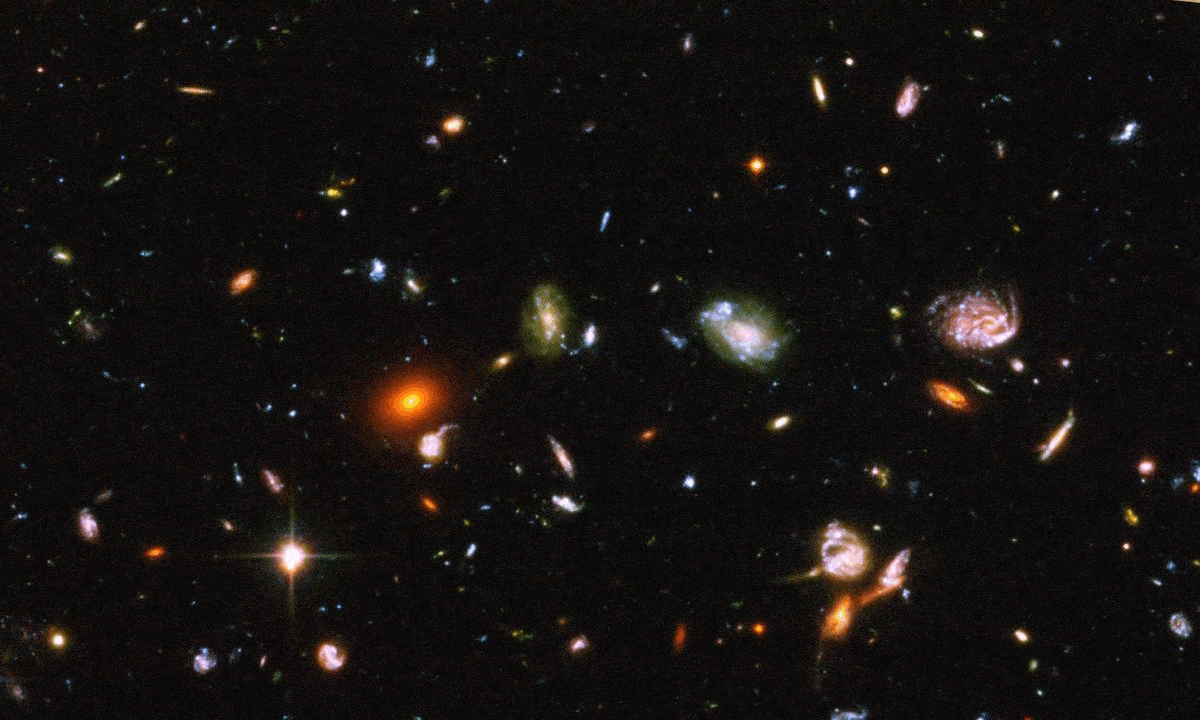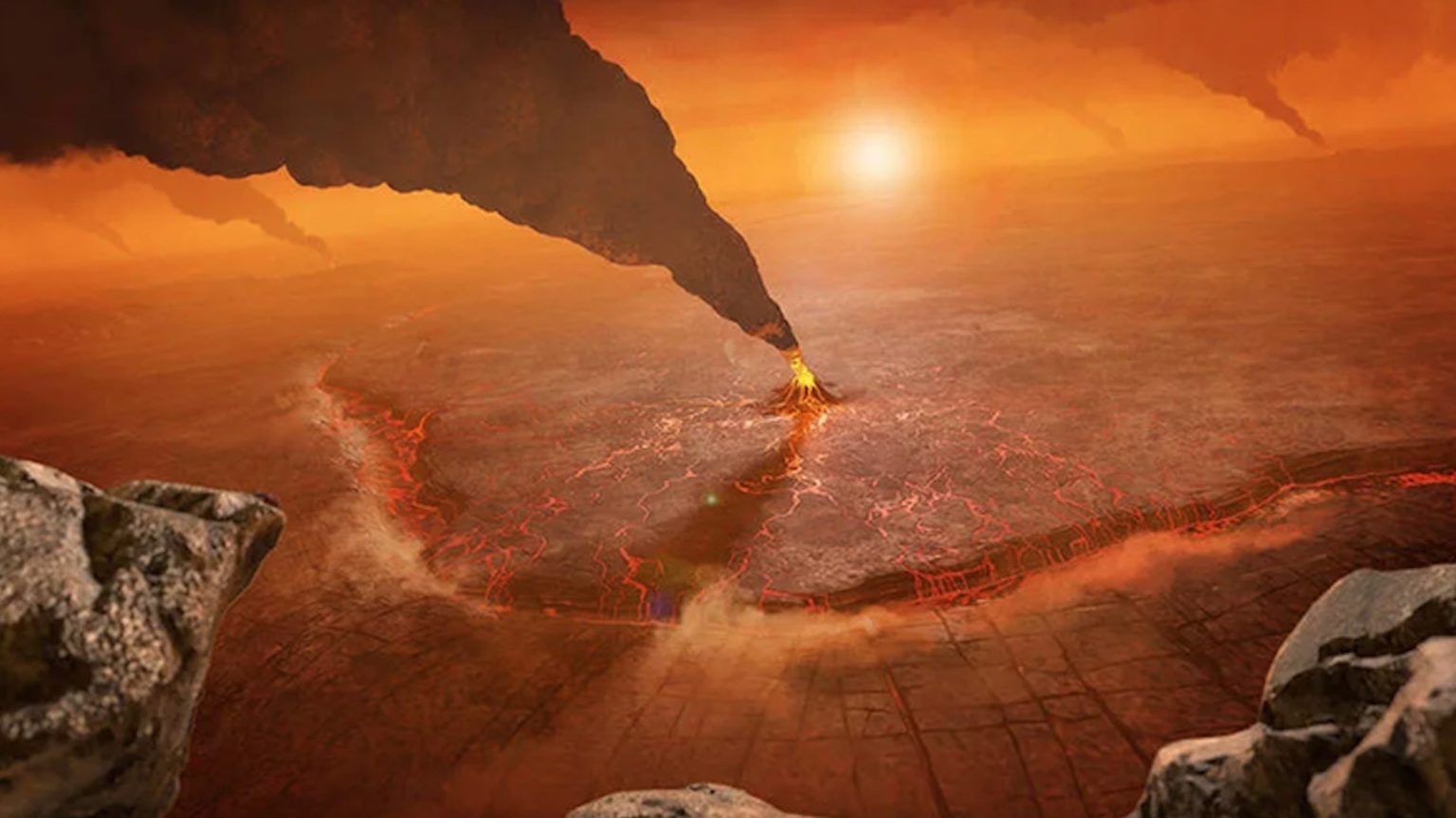Mostly Mute Monday: Hubble unveils deepest view of the Universe, ever
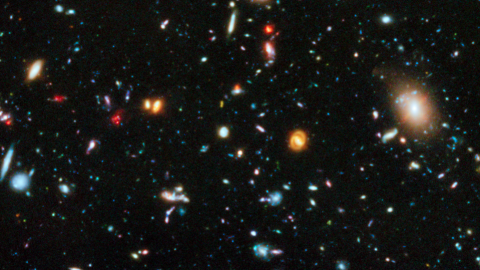
Ultra-deep field? Move over; there’s a new deepest-view of all!
“In other words, theory attempts to segregate the minimum number of possible worlds which must include the actual world we inhabit. Then the observer, with new factual information, attempts to reduce the list further. And so it goes, observation and theory advancing together toward the common goal of science, knowledge of the structure and observation of the universe.” –Edwin Hubble
To see farther out into the Universe than ever before, you must gather the greatest amount of light possible.

The way to do that is:
- go to space,
- with the largest telescope you can,
- and observe a clear patch of sky for as long as you can.
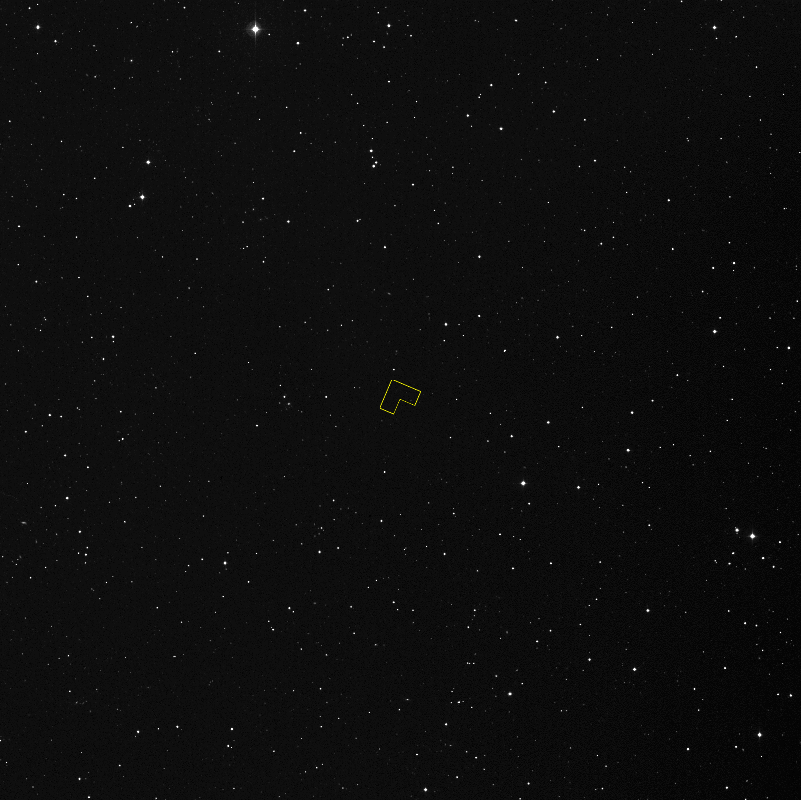
In 1995, Hubble imaged a dark region of space with few stars and no known galaxies 342 times over a ten day span.
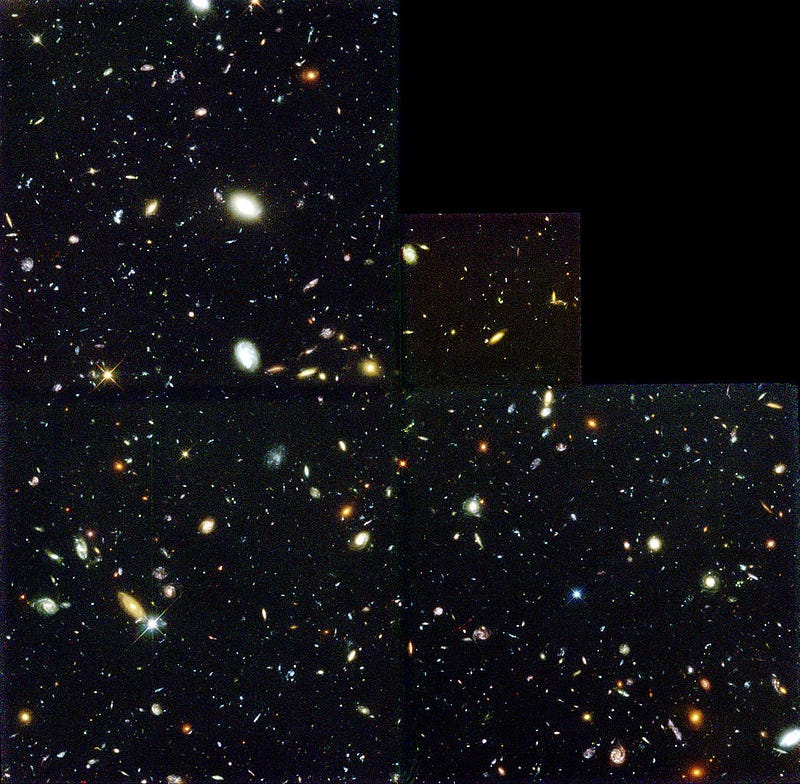
We discovered ~3,000 galaxies, where none were known previously.
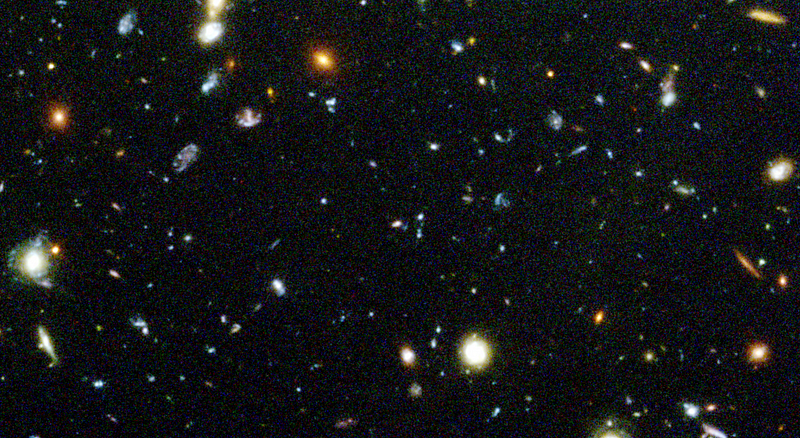
As Hubble’s cameras were improved and longer observing times were used, we saw even deeper than before.
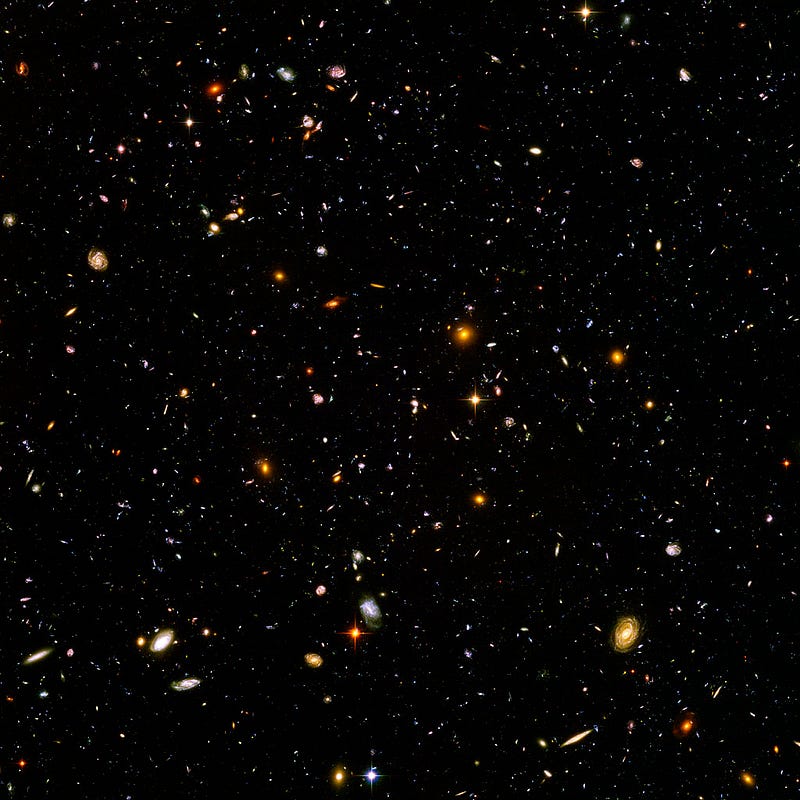
2004′s Ultra-Deep Field revealed 10,000 galaxies, some from more than 10 billion years ago.

Most recently, a portion of this was imaged for even longer periods of time, revealing 5,500 galaxies in a region just 1/32,000,000th of the sky, from as long as 13.2 billion years ago.
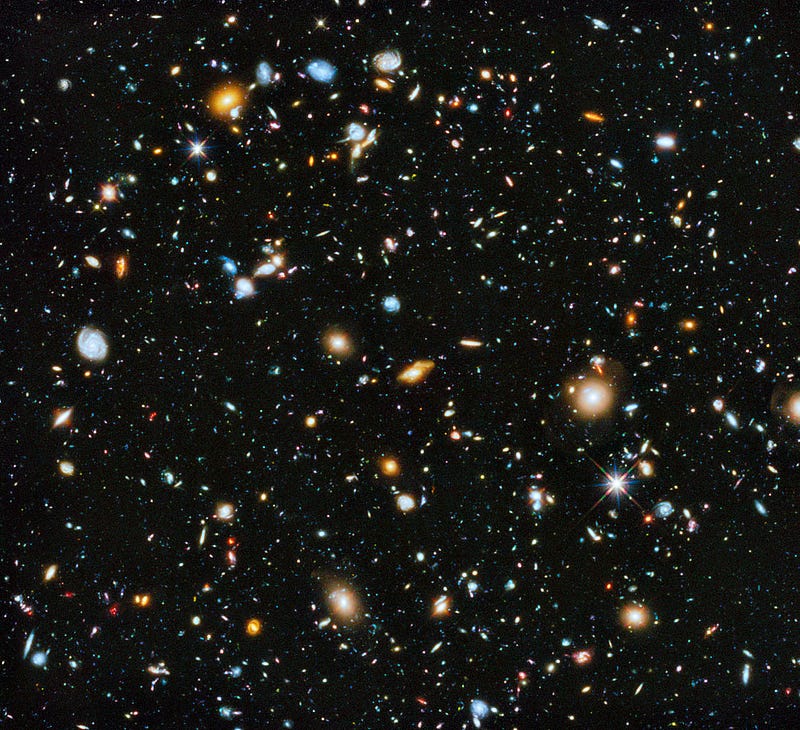
Imaged in ultraviolet, visible and near-infrared light, extrapolating this region to the entire sky indicates that the Universe contains over 170 billion galaxies.
As the James Webb Space Telescope prepares for launch, we anticipate finding even greater numbers of galaxies at the greatest distances of all.
Mostly Mute Monday tells the story of a single astronomical phenomenon or object primarily in visuals, with no more than 200 words of text.
This post first appeared at Forbes. Leave your comments on our forum, check out our first book: Beyond The Galaxy, and support our Patreon campaign!


